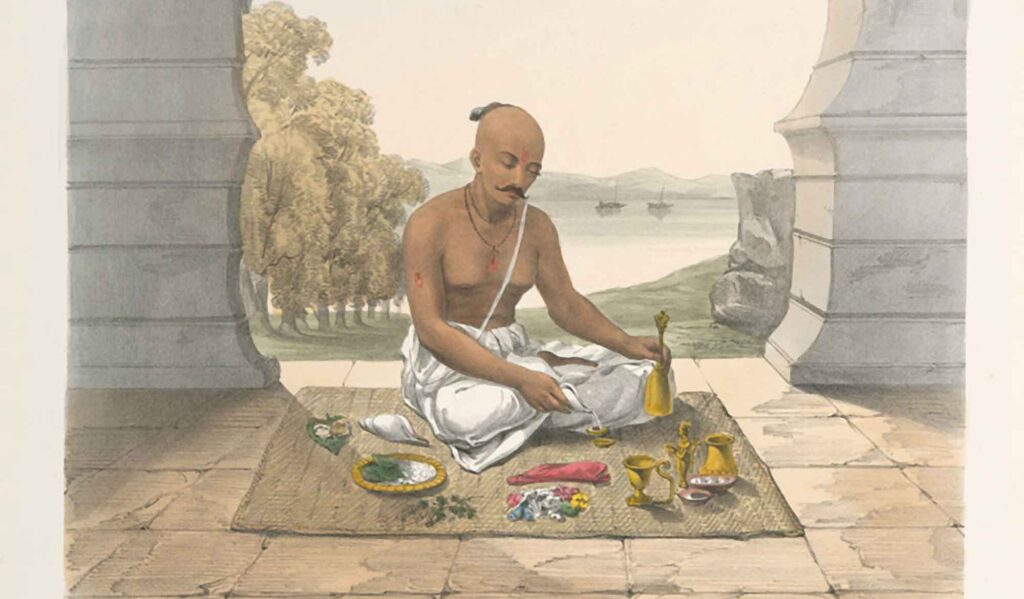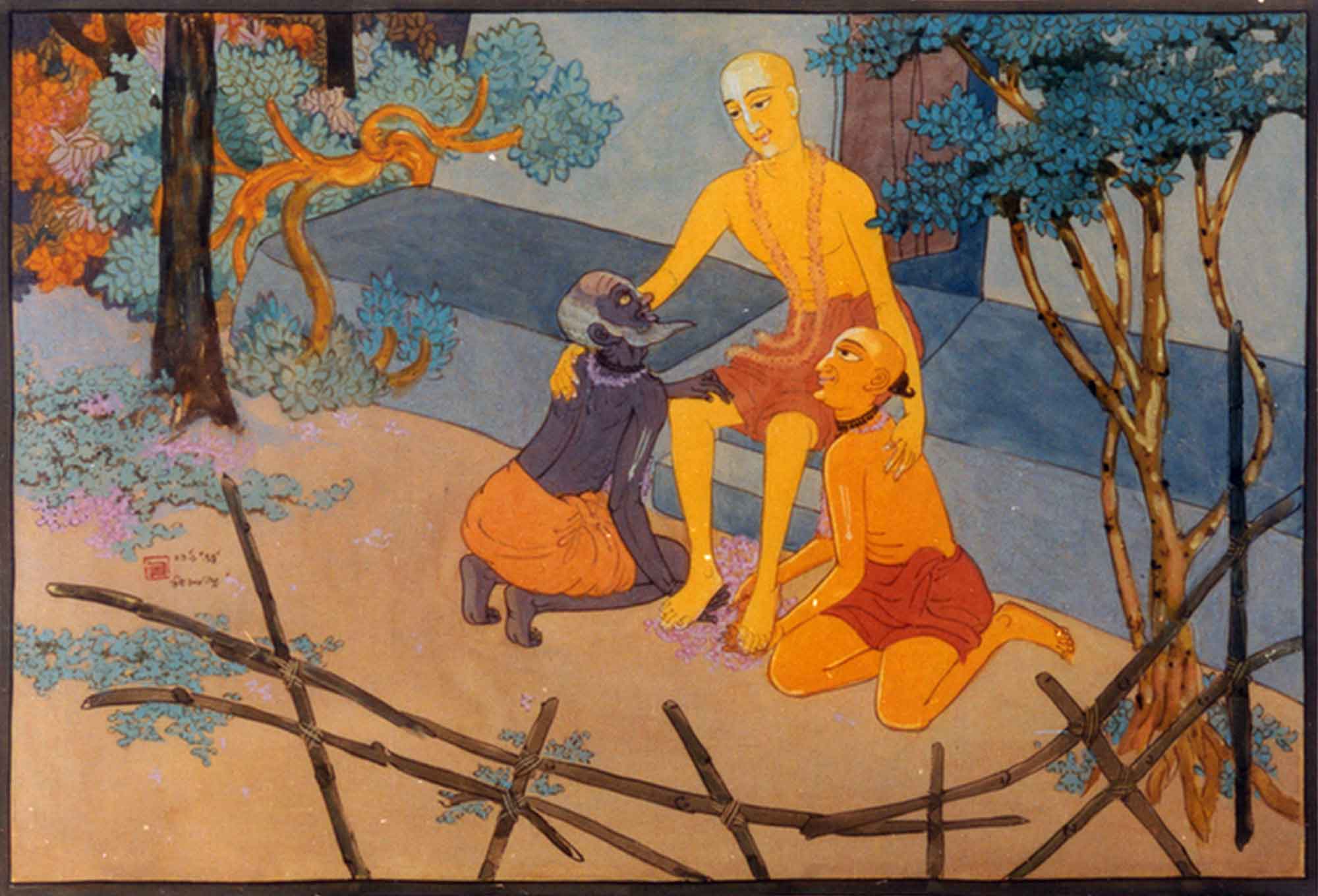Overview
In this short essay, Manuṣya Ki? (What is a Human?) from Sajjana Toṣaṇī, Volume 2, Bhaktivinoda Ṭhākura demonstrates the futility of modern science in understanding the subtle body and the spiritual body.
by Śrīla Bhaktivinoda Ṭhākura
Listen to this article:
How this question is answered by materialistic people, who have turned their faces away from the Lord, is indicated by the words found in the philosophy of a proud western scholar. He said that a human being is 1 pound of carbon, 2 pounds of lime, 20 ounces of phosphorus, 1 ounce of iron, potassium, magnesium, silicon, 5000 cubic feet of oxygen, 1000 cubic feet of hydrogen and 52 cubic feet of nitrogen gas, which are mixed together in a decorated form.
It is a pity that the aforementioned mundane scholar only saw the gross part of the body and nothing else. He simply concentrated upon those substances that comprise the human body. In addition, there is a liṅga-svarūpa – a subtle body of mind, intelligence and false ego. Again, apart from those two, there is another tattva known as the spiritual body. Since the respected speaker, while weighing the human being, could not find anything apart from the gross body, he did not accept the mind and soul as being included in a human being’s basic existence. Alas, the advancement of such materialistic science is the cause of our total destruction.
(‘Manuṣya Ki? – What is a Human?’ by Śrīla Bhaktivinoda Ṭhākura first published in Sajjana Toṣaṇī, Volume 2 and translated into English by Swami B.V. Giri)













